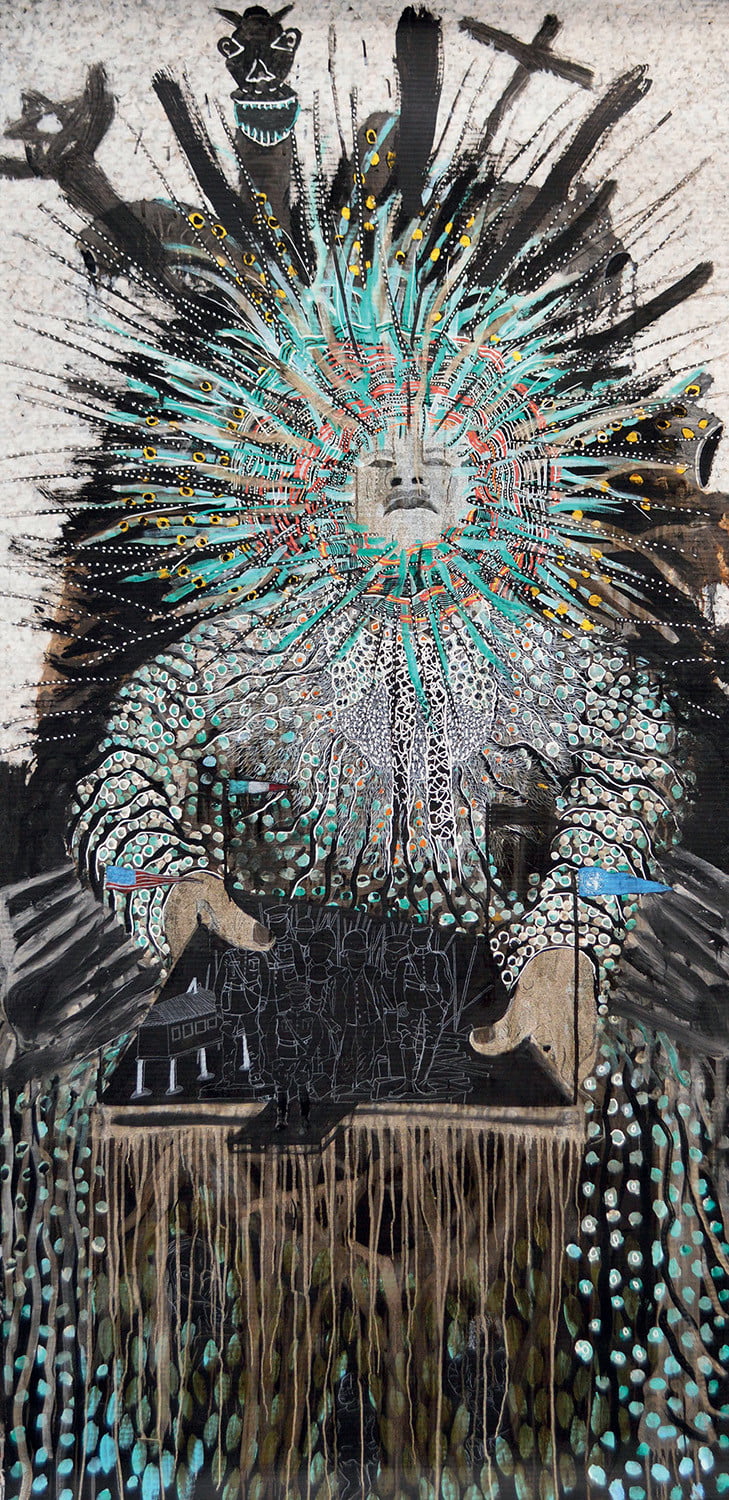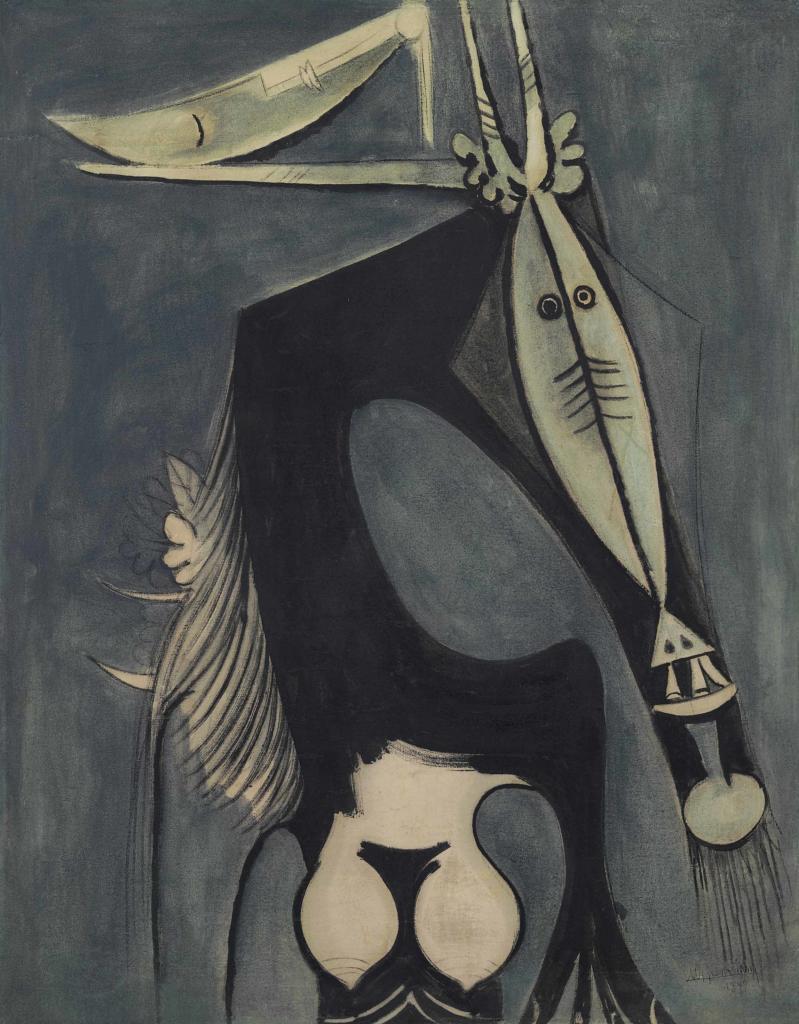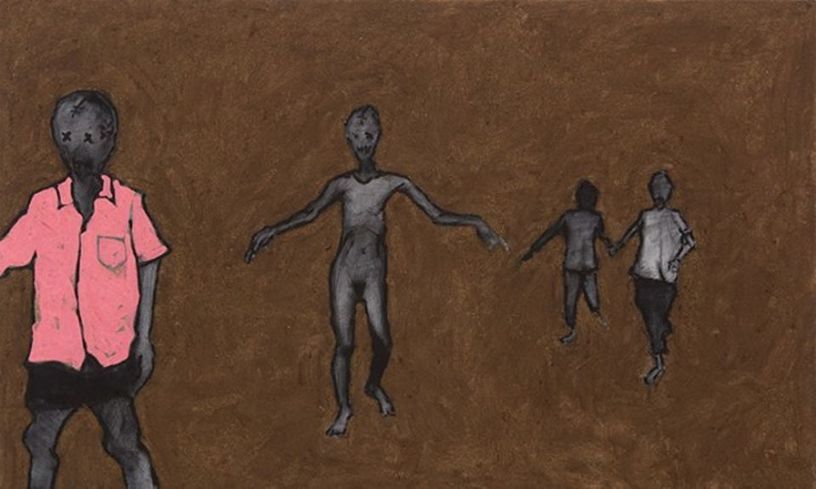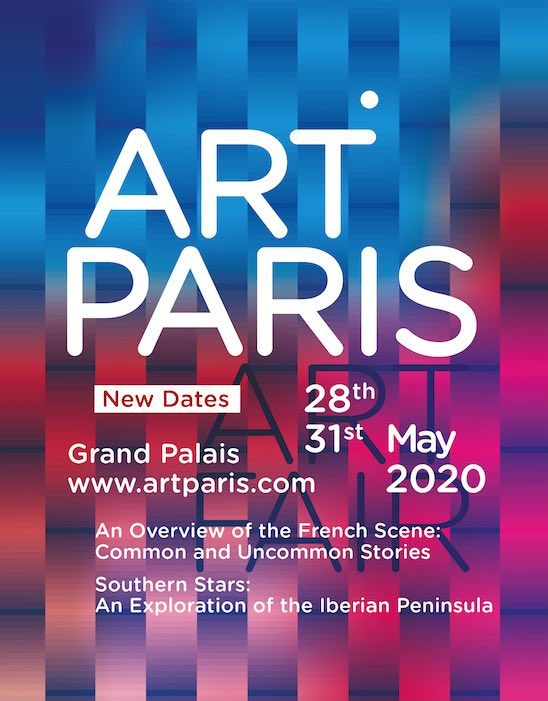Six questions for Omar Ba
The Senegalese painter Omar Ba presents his new paintings until 27 October 2018, at the Templon Gallery in Paris. His paintings, of mixed technique, most often represent political and social motives, symbolic games, and zoomorphic humans…
Why such a title for your second exhibition at the Templon Gallery, “the autopsy of our consciences”?
In the world, I have noticed that things are repeating themselves, that they are not changing, especially the hardest ones, such as war and economic violence. There are real offices. I wanted to do an autopsy of these facts, analyze them. Put everything on the table.
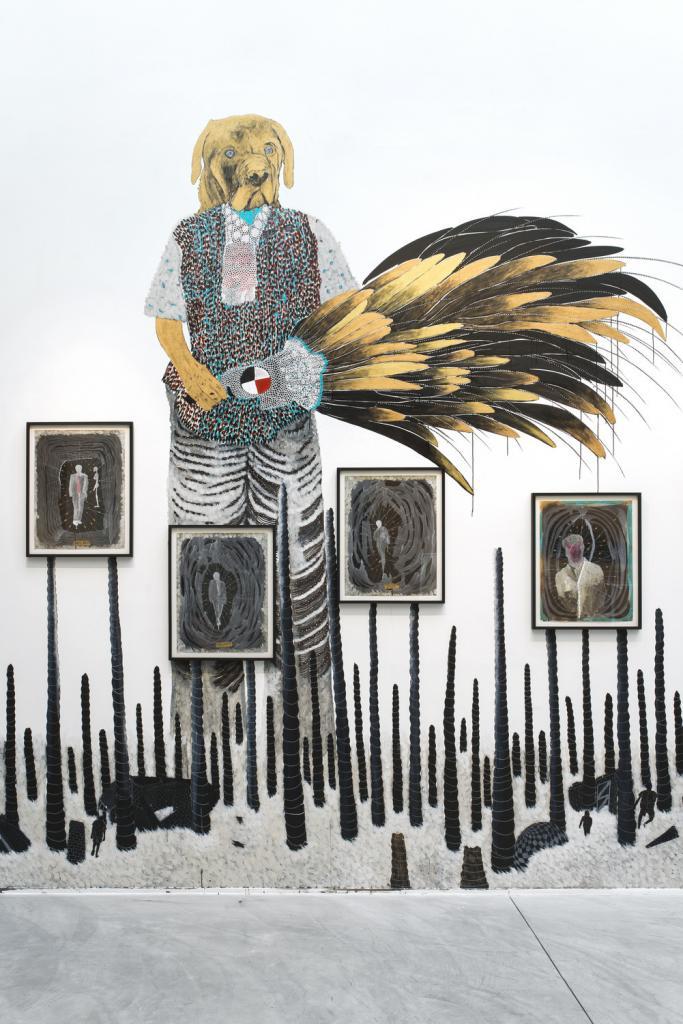
The paintings are direct, quite engaged. Maybe more than before?
I took more things off, I went straight to the point. I no longer seek to embellish reality. The tracks are very muffled and at the same time, the criticism is direct. She’s not covered.
In your opinion, can art make a difference?
It can. The simple fact, concerning me, of saying all these things, of moving towards that, is a situation of comfort. I know that I am included in an economic system, that I am an artist in a commercial gallery. However, I have the freedom to say what I think, and I ask questions about these phenomena, loud and clear. Alone, I won’t change anything, but collectively, artists can.
Your works are marked by their verticality…
I favour verticality, that’s true. My compositions are often full-length characters. I myself look from the bottom up, very axially. Afterwards, this exhibition marks the appearance of the square, I gain in width. This allows me to make the compositions more complex, to include more characters.
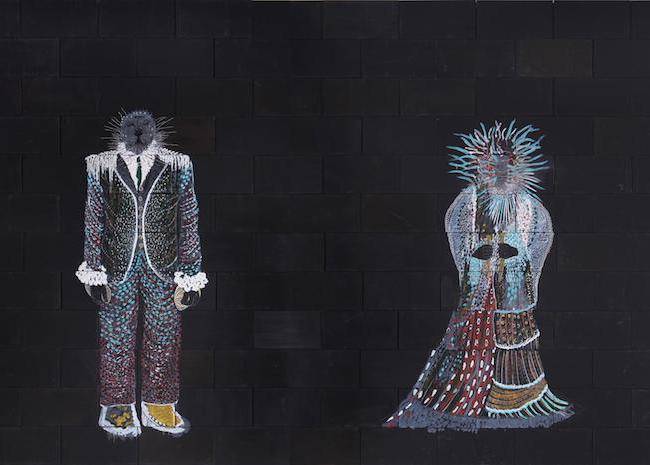
You grew up in Dakar in the 1990s, at a time when the Senegalese art world was torn between Léopold Sédar Senghor’s “negritude” and alternative paths, such as Agit’art. Did it forge your way of looking at art?
At first, yes, but the fact of travelling, of living in Europe, all this made me leave this vision of the world. Today, my consciousness is made up of mixed influences. What I want is to build bridges between the North and the South…
By the way, is that what explains your transition from abstraction to figuration, when you arrived in Geneva?
Indeed, this passage was fuelled by frustration, the need to be understood. I came from Senegal, but people didn’t understand my work, didn’t know how to read my abstraction. I had to find a way to communicate that would work everywhere. Afterwards, some patterns remained, the color is still as important as ever… but my language is more universal.

